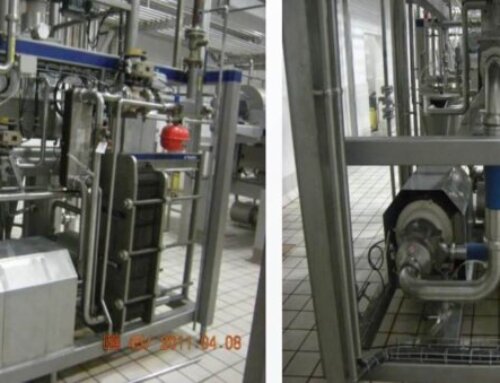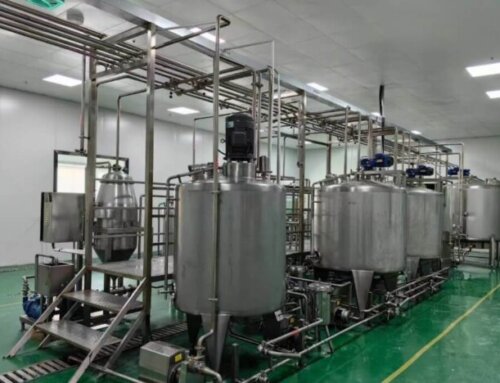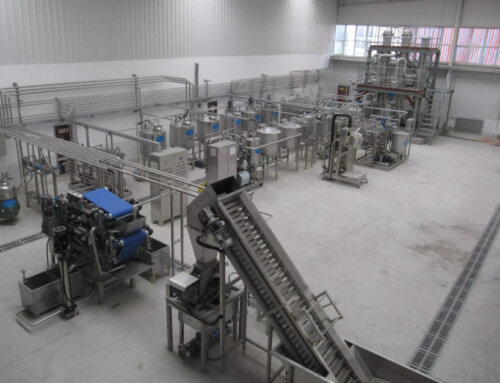Non-thermal processing of food and beverages is mainly used for sterilization of food, so it is also called cold sterilization technology. The United States, the European Union and Japan have invested a lot of human and financial resources in research and have made important progress, and some of the advanced cold sterilization technologies are already put into industrial applications such as ultra-high pressure processing(HPP), pulsed electric field (PEF) processing. There are many non-thermal processing food products such as jams, juices, milk, egg products and meat products in the market.
Traditional heat sterilization technology can ensure the safety of beverages in terms of microorganisms, but heat treatment can also destroy heat-sensitive nutrients and affect the color and flavor of beverages. Although the cold sterilization technology started late, due to the nutrition original taste is increasing day by day among consumers, and the cold sterilization technology has been paid more and more attention and made rapid progress. Non-thermal processing technology can not only ensure the safety of beverages in terms of microorganisms but also keep the nutrients, color and freshness of the juice.
The non-thermal processing technology is likely to become one of the most potential technologies in the field of fruit juice processing, bringing revolutionary changes to the production of high-quality fruit juice. But these techniques also have shortcomings, such as they can not completely inhibit and kill the enzymes in the fruit juice. The focus of non-thermal processing has now shifted to the synergy between non-thermal processing and mild temperature processing.
The following is a brief introduction to several common non-thermal processing techniques:
Ultra-high Pressure Processing(HPP technology)
Ultra-high pressure sterilization is to apply a pressure of 200-1000Mpa to the soft package juice in a closed container with water as a medium to obtain a good sterilization effect. The higher pressure, the better the sterilization effect. Extending the press time under the same pressure does not necessarily improve the sterilization effect. Under the pressure of 400-600Mpa, it can kill bacteria, yeast and mold.
Ultra-high pressure sterilization is most suitable for sterilization of liquids such as 100% NFC juice drinks, concentrated juices and jams. The fresh juice after HPP treatment will be no loss of color, flavor and nutrients.
The main reasons for the spoilage of acidic juice beverages are yeasts, molds and some spoilage bacteria. Bacillus with strong heat resistance cannot reproduce under acidic conditions, so the HPP technology is widely used for pasteurizing juice. Pressurized at 400Mpa for 10min, the juice with a pH value below 4 can reach a commercial aseptic state, and it can be stored at room temperature for several months or even a year without microorganisms.
In the production of juice, the use of ultra-high pressure processing not only kills the microorganisms in the fruit, but also simplifies the production process and improves product quality. Ultra-high pressure processing is also widely used in the processing and sterilization of dairy products and plant-based milk. After ultra-high pressure treatment, soymilk has no cooked taste, and gets a fine texture and good flavor.

Ultraviolet sterilization
Ultraviolet sterilization is cheap, convenient, has no residual toxicity, and is relatively safe. It is one of the common physical disinfection methods. Its main purpose is to sterilize air, but it can also be used to sterilize water, beverages and surfaces of equipment. UV light can kill a variety of microorganisms, including bacteria, fungi, and viruses.
Ultraviolet sterilization is to destroy and change the DNA (deoxyribonucleic acid) structure of microorganisms through the irradiation of ultraviolet lamps, so that the bacteria immediately die or cannot reproduce, so as to achieve the purpose of sterilization. What really has a bactericidal effect is UVC ultraviolet rays, because the C-band ultraviolet rays are easily absorbed by the DNA of the organism, especially the ultraviolet rays around 253.7nm.
The sterilization effect of ultraviolet rays is related to the number and particle size of suspended solids in the air, the irradiation dose of the ultraviolet lamp and the sterilization time.
The penetration of ultraviolet rays in liquids decreases with the increase of depth, and impurities, dissolved salts, sugars and various organic substances in the water greatly reduce its penetration. Alcohol or fruit juice products can block more than 90% of UV rays with a thickness of 0.1-5mm. So the UV sterilization technology usually is used for sterilizing pure water but not for juice.

Ozone sterilization
The principle of ozone sterilization is to achieve sterilization by destroying the structure of the microbial membrane by oxidation.
In the beverage production process, ozone water can be used for soaking and rinsing of pipelines, production equipment and containers, so as to achieve the purpose of disinfection and sterilization. Using this method of soaking and rinsing, a large number of bacteria on the pipelines, equipment and containers are washed away, and the bacteria that remain on the surface will be killed by ozone, which is very simple and convenient, and no dead angle. It also completely avoids the discharge and residual problems of chemical toxic substances caused by the use of chemical disinfectants in production. The use of ozone water for disinfection and sterilization of production equipment, combined with membrane separation process, aseptic filling system, etc., is used in the production of soy sauce, vinegar and wine in the brewing industry, which can improve the quality of products.

Microwave Sterilization
Microwave refers to electromagnetic waves with a wavelength of 0.01-1m and a frequency of 0.3-300GHz. Microwave sterilization is using the combined effect of microwave thermal effect and biological effect to achieve the purpose of sterilization.
Microwave sterilization has been applied to the production of the beverage industry. The use of microwave sterilization technology has the characteristics of low stability and short sterilization time, which can not only kill various bacteria in beverages but also prevent mildew during storage.

Ultrasonic Sterilization
Ultrasound is a form of propagation of mechanical vibrational energy. When ultrasonic waves propagate in solids, liquids and gases, they cause a series of effects that can destroy the state, properties and tissue structure of bacteria.
Ultrasonic treatment of liquid food can denature the protein in the liquid and degrade the macromolecular substances. Ultrasonic treatment of milk can denature casein and whey protein in milk.

Pulsed Electric Field (PEF) Sterilization
Pulse electric field sterilization is to use the dielectric end principle of strong electric field pulse to inhibit beverage microorganisms. During fruit juice processing, the microorganisms that grow are sensitive to the passivation effect of pulsed electric fields. High-voltage pulsed electric field sterilization has the advantages of short processing time, low energy consumption, fast delivery and uniformity. When processing liquid beverages, its device is divided into 5 parts: high-voltage pulser, continuous processing chamber, liquid beverage pump, cooling device and data processing system with computer. For different liquid beverages such as concentrated apple juice and fresh apple juice, under different initial temperatures and different maximum temperature conditions, the shelf life is different after the same high-voltage pulsed electric field is used. Therefore, different beverages should adopt appropriate sterilization conditions according to the characteristics of the material and storage requirements.





